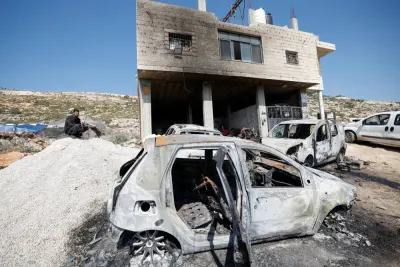AFP
The Palestinians scored a cultural victory against Israel yesterday as Unesco granted endangered World Heritage Site status to ancient West Bank terraces under threat from the Israeli separation barrier.
After an emergency nomination by Palestinian officials, the UN cultural agency’s World Heritage Committee gathering in Doha voted to grant the protected status to the agricultural community of Battir, which straddles the Green Line just south of Jerusalem and where Israel plans to erect part of the barrier.
The granting of the status is likely to boost the efforts of local residents locked in a high-profile court battle in Israel to change the route of the barrier.
“The site is inscribed, congratulations to Palestine,” committee chairwoman and chairperson of Qatar Museums HE Sheikha Al-Mayassa bint Hamad al-Thani said after the resolution was approved.
The Palestinian delegation rejoiced at the vote, hugging and cheering.
The Palestinian ambassador to Unesco, Elias Sanbar, said the decision would be “etched in the memory of my people.”
“Today you have taken... a courageous decision against confinement, exclusion and domination,” he said.
But Shuli Davidovich, the head of the Israeli delegation, denounced the vote as “a dark day in the heritage of Unesco.”
“We regret that the committee failed to fight the politicisation” of the debate, she said.
Battir is famous for its ancient terraces and Roman-era irrigation system which is still used by villagers for their crops.
But the area has come under threat from Israeli plans to erect part of the West Bank separation barrier there, which experts say will irretrievably damage the water system.
The Palestinians won membership in Unesco in October 2011 and quickly moved to submit a number of sites for recognition, including an emergency application for Bethlehem’s Church of the Nativity which was approved in June the following year, despite Israeli objections.
In their submission for the Battir listing, the Palestinians said the landscape was under threat from “geo-political transformations that may bring irreversible damage to its authenticity and integrity.”
“The main potential threat to the property is a plan by Israeli authorities to construct a physical barrier. This would prohibit access by Battir farmers to their lands,” it said.
About 7km south of Jerusalem, the landscape encompasses a series of agricultural valleys with stone terraces irrigated for the production of vegetables, vines and olive trees. It is doted with ancient villages, fortifications and graves.
The Palestinian submission described the area as a “visually spectacular landscape” that give “clear testimonies of the continuous history of human settlement in the region over the past 4,000 years.”
The area forms “a cultural landscape of considerable scientific interest and beauty,” it said.
Israel began building its barrier in 2002 at the height of the second Palestinian intifada, or uprising. It argued that its construction was crucial for security, but the Palestinians see it as a land grab aimed at stealing part of their future state.
UN figures show that Israel has already built around two-thirds of the barrier - a network of towering concrete walls, barbed-wire fences, trenches, and closed military roads that will extend 712km when completed.
The Paris-based UN Educational, Scientific and Cultural Organisation oversees the system of granting coveted World Heritage Site status to important cultural and natural wonders.
Obtaining the status for sites is a point of pride for many nations and can boost tourism, but it comes with strict conservation rules.
Unesco delegates are meeting for 10 days in Doha to consider the inscription of 40 sites on the World Heritage List and issue warnings over already-listed locations that may be in danger. Page 4



